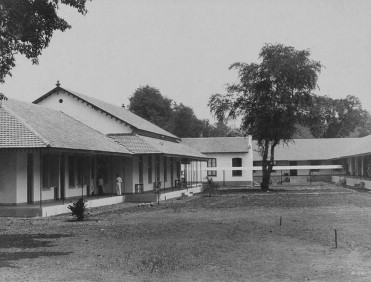In mid-20th century, several streams of knowledge converged to create the new academic discipline of cardiovascular disease epidemiology and the new practice of preventive cardiology. One stream was modern cardiology, with the ability to diagnose myocardial infarction, to characterize and count its victims, and to report vital statistics on cardiovascular causes of death. Another stream came from burgeoning clinical and laboratory research and greater understanding of the underlying processes of atherosclerosis and hypertension. A third stream came from the observations of intellectually curious “medical Marco Polos,” who brought back from travels their tales of unusual population frequencies of heart attacks, along with ideas about sociocultural causes. This led to more formal research about cardiovascular disease risk and causes among populations and about mechanisms in the clinic and laboratory. The broad river of investigation thus formed produced a risk paradigm of the multiple biologic, behavioral, and societal factors in causal pathways to the common cardiovascular diseases. An evidence base was built for sound clinical and public health approaches to prevention. Here, the author tells brief stories about 5 early and particularly observant world travelers and their influence on knowledge and thinking about prevention.
Modern epidemiologic observations and trials of cardiovascular disease (CVD) prevention have some of their roots in the voyages of medical scientists who, like Venetian explorers of yore, traveled to “exotic” lands to marvel over and report on “foreign” wonders. In the last century, a few found themselves, for one reason or another, in regions with remarkably low or high rates of CVD and with their curiosity aroused about possible causes. These “medical Marco Polos” became central actors in the early dramas of preventive cardiology and were originators of today’s views on the environmental determinants of epidemic heart attack and thus the potential for prevention. Stories about their travels among contrasting cultures during the early and mid-20th century begin with that of Cornelis de Langen, of Groningen, a young internist assigned by the government of The Netherlands to practice and teach in the Dutch East Indies.
Cornelis D. de Langen
De Langen’s adventure began in May 1914, when his ship left Rotterdam and sailed by a route we cannot document but that likely took him through the Suez Canal, then over the vast Indian Ocean into the Strait of Sudah, past Rakita, the islet remnant of Krakatua’s explosion, to dock finally, after weeks at sea, in the bustling tropical port of Batavia, the Dutch colonial name for present-day Jakarta.
As chef de clinique in internal medicine at Groningen University, de Langen’s promising academic career was interrupted by his assignment to the colonies. The young physician, guided by his Groningen chief and mentor, Albert Abraham Hijmans van den Bergh, was nevertheless well prepared to help the Javanese combat epidemic plague and to teach medicine to the local trainees.
Van den Bergh, at the beginnings of modern medicine, was the complete internist: intellectually curious, deeply informed in the biochemistry of disease, devoted to his patients, and honoring a tradition of professional duty. House officer de Langen practiced and taught within this solid tradition. Thus, the request of his government to serve in the colonies was met with dutiful acceptance. He departed his homeland for an indefinite stay in a world that would prove to be foreign not only in climate, culture, and language but also in the medical profile of its people.
Supported in Batavia by the Foundation for the Education of Indonesian Doctors ( Figure 1 ) , de Langen soon established order in the clinic, with its clean-swept yards and pleasant semitropical surroundings. His family biographers recount how, with a color-coded chart of the ward beds, he could identify at a glance not only the patient and the diagnosis but the stage of hospitalization and therapy, allowing him to make rounds efficiently and effectively. International medical academician Isidore Snapper, one of de Langen’s closest lifetime colleagues, later corroborated others’ impressions of the young doctor’s suitability for the job, calling de Langen “a young man with a very original mind” and writing that he “always considered de Langen as an excellent example of the inspiration which Hijmans van den Bergh instilled into his pupils.”

Stay updated, free articles. Join our Telegram channel

Full access? Get Clinical Tree


